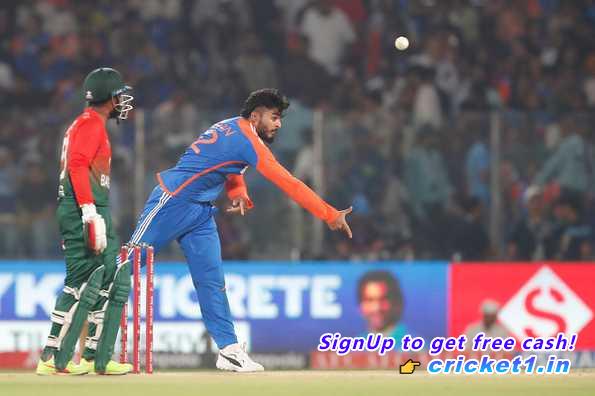
India’s recent T20I series in Delhi highlighted more than just their aggressive batting approach. The spotlight was also on the extensive bowling options available to the team. A remarkable seven Indian bowlers contributed with wickets during the match, marking a record for the team in a T20I. Interestingly, this impressive feat was achieved without the inclusion of Hardik Pandya, a key all-rounder and a regular wicket-taker for India.
India’s captain, Suryakumar Yadav, apparently had the privilege of an abundance of bowling choices at his disposal. So much so that he neither felt the need to bowl himself nor to call upon Rinku Singh, even though the pair had successfully bowled India to a thrilling tie against Sri Lanka just a couple of months earlier. The Indian strategy demonstrated in both Delhi and Gwalior was one of flexibility. If required, the captain could have potentially employed up to ten bowlers to cover the 20 overs, but fortuitously, the series did not push the team to that extent.
The Indian cricket team has historically struggled with a lack of part-time bowlers among its batting lineup. The emergence of players like Axar Patel has provided relief, yet recent challenges were evident during the last ODI World Cup when the team had to rely heavily on a limited bowling lineup due to Hardik Pandya’s injury. The current squad, however, shows a different complexion with additions such as Nitish Reddy, who took on the new ball duties in Delhi. Riyan Parag also showcased his effectiveness in spin-friendly conditions during the tour of Sri Lanka. In the mix, Abhishek Sharma stands out with his expertise, having bowled 134 overs in T20 matches at an economy rate of just above seven, with his best figures being an impressive 3 for 7.
India’s assistant coach, Ryan ten Doeschate, has emphasized the value of having a multitude of bowling options. “With the way games unfold today, it’s rare for all selected bowlers to perform flawlessly. Therefore, having several alternatives is advantageous,” he stated. Ten Doeschate further remarked that Hardik Pandya’s absence from the bowling lineup in the last game only underscores the depth within India’s current squad.
Achieving a balanced team structure, one that neither overloads on specialist bowlers nor underestimates the need for strong batting, is critical, according to ten Doeschate. With a surplus of all-rounders, India can afford to field a specialist bowler if the situation demands.
. This strategic depth provides the captain, Suryakumar Yadav, numerous options during matches.
The selection of players capable of executing multiple roles has facilitated India in cultivating unprecedented depth throughout the series. This selection strategy will indeed present favorable selection dilemmas for upcoming marquee tournaments like the World Cups and the Champions Trophy. “The players we’ve selected can adapt to multiple roles, which is pivotal for maintaining team balance, especially as conditions vary,” ten Doeschate commented. He highlighted Riyan Parag’s versatility — although Parag has not yet demonstrated his full potential in the series, India views him as a middle-order mainstay who can also finish matches.
This strategic flexibility extends to the squad’s composition, which includes players like Mayank Yadav and Nitish Reddy who recently debuted in their first T20I. Ryan ten Doeschate elaborated, “It’s important to integrate new talents into the team framework. Monitoring and understanding how these individuals function, such as Jitesh, Tilak Varma, and Harshit Rana, will be crucial over the next 18 months.”
India’s depth is supported by a strong bench of players who are yet to be featured in the ongoing series. Players like Jitesh Sharma and Tilak Varma await their opportunities, while Sanju Samson, who has been temporarily positioned as an opener, is poised to seize another chance. Harshit Rana is anticipated to debut soon, further adding to India’s array of options.
The approach, as outlined by ten Doeschate, includes equipping as many players as possible with international experience in preparation for upcoming tournaments. This strategy is underscored by the team management’s determination to try out new faces while keeping winning as a top priority. Samson’s quick innings in Gwalior was a statement of the team’s philosophy of attacking play, aimed at maximizing runs in every match situation.
“We’re encouraging players to push their limits, taking the game forward in line with modern cricket,” ten Doeschate mentioned. He reflected on how this methodology allows players to expand their skills, preparing them for critical matches ahead. “We want the team to perform in high-pressure situations, and giving them the confidence to play freely ensures we’re ready for future challenges,” he concluded.
India’s tactical emphasis on versatile players aims to ensure robust preparation and readiness for pivotal cricket events on the horizon. The depth and adaptability within the squad signify a new era in Indian cricket strategy, potentially revolutionizing how games are approached and played on the international stage.

